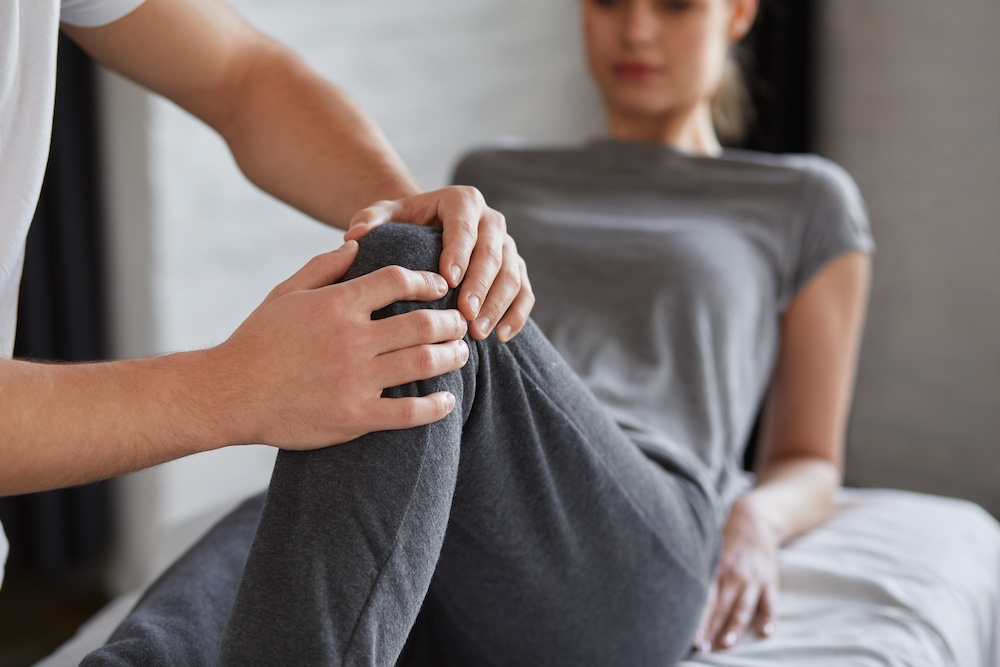Bad posture is way too easy. It’s natural for many people to slouch over a computer keyboard or dinner table. However, bad posture can impact your health. When you slouch or sit in an awkward position, your weight is unevenly distributed throughout your body. This puts stress on your muscles and joints, causing pain and even long-term health conditions.
More than half of the UK suffers from crippling posture problems. There are ways to fix bad posture that doesn’t require medical assistance, but they do demand diligence and commitment. Correcting bad posture means being aware of how you sit, stand and move. It can be difficult and tiring, but the health advantages brought by good posture are worth the effort.
Another proven way to improve posture are massages. Ongoing massage relaxes the muscles made sore by bad posture. Once the pressure points are relieved, it’ll be relatively easier for you to fall into a natural and non-damaging posture.
Take a look at this guide on how to straighten posture over time.
What is Posture?
There are two types of posture: dynamic posture and static posture. Dynamic posture is how you hold your body while it’s in motion. Meanwhile, static posture is how you hold your body when you are not moving.
When people mention posture, they are usually talking about static posture. This type of posture includes sitting, standing or lying down. But both types of posture are important in maintaining good health.
Dynamic posture becomes more challenging to maintain if you have not already established a good static posture. This means that if you’re trying to correct your posture, you have to start with the non-moving type of posture.
How Long Does It Take to Correct Posture?
According to a Harvard Health Letter, it takes six to 12 weeks of proper posturing before you see any noticeable difference. You can achieve your goal in a shorter timeframe if you actively avoid holding your body in awkward or unergonomic positions.
You may be wondering: why does posture take so long to correct? That’s because it’s already become your habit. For example, you sit in a chair and immediately get into a comfortable position based on what feels right. But what feels right is based on habit and muscle memory, not what’s necessarily best for your body. So, it’s likely that you’ll slouch, put your feet up or lean your upper body on either side.
Your body is used to the way you sit and stand every day. This makes even the smallest change feel awkward, since your body isn’t accustomed to the new positions you’re trying to adopt. That’s also why it’s common to feel fatigued after holding the proper posture for prolonged periods, especially if you’re only starting to correct it. But the weariness should go away after some time once your body gets used to moving and staying in the right posture.
Why is Posture Important?
The question is: why bother with maintaining good posture when it requires so much work?
The main reason is that poor posture can be crippling. Many people suffer from increasing back pains after the age of 40 when they don’t correct poor posture. Spine curvature is one of the most common long-term consequences of bad posture. This is when your spine naturally forms a “C” shape and slowly loses its ability to absorb shock, which puts your body at risk for more serious injuries in the future.
Other side-effects of poor posture include poor blood circulation, back and neck pain, headaches, disrupted digestion and even poor sleep quality.
Bad posture also means using more energy. According to the Multiple Sclerosis Trust, core muscles in your abdomen work more efficiently when you align them correctly.
Muscle weakness, problems with coordination, fatigue and back pains are all improved with good posture.
How to Fix Bad Posture
According to the U.S. National Library of Medicine, the key to good posture is in the position of your spine. You must maintain the natural curvature of your neck, middle and lower back to fix your posture. When you overarch your back or slouch your shoulders, you pull at the natural curves in your spine putting a strain on the back.
Keep these in mind when you start working on your posture:
- Keep the chin tucked while seated.
- Relax your shoulders. Keep your shoulders back.
- Place your shoulders over your hips.
These sound easy but as mentioned before, correcting bad posture can be difficult because you’re essentially breaking a habit.
Follow these techniques to fix your posture over time.
1. Wear Comfortable Shoes
High heels, like stilettos, look great but can change the way you walk by shifting your centre of gravity. They put stress on your back and knees because your weight shifts forward. When you’re walking in heels, each step creates a shock wave through your body, which can throw off your posture and gait.
If you need the extra height, you can wear low, comfortable heels instead. This balances out the way you walk, leading to improved posture.
2. Maintain a Healthy Weight
Excess weight puts extra stress on the body, making it hard for you to correct your posture. By maintaining a healthy weight, you make sure that the weight and stress are evenly distributed through your body. This makes proper posture easier to achieve.
You don’t have to go on a strict diet to maintain your weight. Watch what you eat and consume everything in moderation. Try to avoid food that’s high in sugar and saturated fats because these are associated with weight gain.
3. Exercise Regularly
Take time each day to do exercises that strengthen your core. A strong core is critical to lifting your frame and keeping your body in an upright position. It keeps your back erect and shoulders balanced as your midsection provides needed support for the back. If your core muscles have grown weak from inactivity, they can cause your body to lean forward.
Do exercises that strengthen your core, chest and upper back. Some examples are planks, glute bridge and the superman. Pilates is also great for correcting bad posture.
4. Keep Good Posture in Mind
Think about how you’re sitting or lying down. This may seem like an inconvenience, but some posture mistakes are easy to correct. Taking a moment to remember how you’re sitting or standing can help you gradually break bad posture habits.
However, don’t attempt to change all your bad posture habits at once. Doing so can put too much stress on your body, causing muscle and joint pains. Start with small changes like pushing your shoulders back or keeping your chin tucked.
5. Create a Comfortable Workspace
It’s hard to be mindful of your posture when you’re working on your computer or laptop. That’s why there are ergonomic office furniture and equipment that help you maintain proper posture throughout the workday.
If you don’t have space for a fully ergonomic work setup, you can improvise with the furniture you already have. Just keep the following in mind:
- Keep work surfaces at a comfortable height when using a computer or tablet. A keyboard that’s too low means slouching to reach the keys.
- Use a platform to raise your screen while at work. This keeps your neck bent at a natural angle to view the screen.
Massage & Posture
Massage therapy can be a great way to improve your posture. Most of the strategies for improving posture are uncomfortable at first and require practice. Getting a massage is a great way to ease into better posture. It allows your body to reset, breaking bad posture habits to develop good ones.
Massages help stretch and lengthen tightened muscles that may be leading to poor posture. You can stretch these muscles through exercise, but 30 minutes or an hour spent in a full body massage chair brings more benefits compared to a few minutes of stretching.
Relaxing the shoulders is also key in maintaining good posture. Anxiety can lead to hunched, tightened shoulder muscles. A deep tissue massage can help loosen tightened muscles in the shoulders helping you relax and realign your spinal cord. You can use a portable handheld massager to work on relaxing and correcting your shoulder posture.
Massages can also help with correcting leg posture, which is something not everyone pays attention to. Sitting for prolonged periods with your leg raised or placed over the other knee can rotate your pelvis. A tilted pelvis can cause lower back pain and spine misalignment over time.
To correct your leg posture, a leg massage machine helps relax tightened muscles in your lower extremities. Once your leg muscles are reset, you can work on developing good posture habits that don’t put excess strain on your legs.
These are also types of massage that work well in promoting relaxation needed to improve your posture:
- Aromatherapy massage
- Neck massage
- Electronic pulse massage
- Chair massage
Massage therapy is possible at home with the right tools. If you have chronic posture problems, it’s worth investing in your own massage tools to help your body make the necessary adjustments on a daily basis.
Take Control of Your Posture
Not everyone has the time to visit the clinic or a medical professional for posture correction therapy. A good massage therapist can show you how to fix bad posture over time. But if you don’t have time for an appointment, you can get similar results at home.
Empower yourself by investing in the best massage tools to get your spinal cord into top shape.OSIM carries a wide selection of massage chairs and massagers, suitable for every physical need and budget.
Browse our online catalogue today to view our selection of massagers and massage chairs. For more information on massage products, please fill out our online form.




